Build sustainably with durable, green materials that lower your carbon footprint and last for decades.
In the environmentally conscious community of Davis, CA, sustainability is more than a trend, it’s a lifestyle. From solar panels to water-efficient landscaping, local homeowners are increasingly looking for ways to reduce their environmental footprint while maintaining style and comfort.
One area that’s gaining attention in green construction is eco-friendly concrete. As one of the most used materials in home building, concrete plays a major role in a home’s sustainability. Fortunately, modern technology has made it possible to enjoy all the strength and durability of concrete while significantly reducing its environmental impact.
Here’s how eco-friendly concrete options can help you build or remodel a more sustainable home in Davis.
1. Recycled Aggregate Concrete
One of the simplest ways to make concrete more sustainable is by using recycled aggregates, crushed concrete, stone, or sand reclaimed from previous construction projects.
Why It’s a Smart Choice:
Reduces the need for mining new materials.
Keeps construction debris out of landfills.
Performs just as well as traditional concrete for patios, driveways, and foundations.
Local Benefit:
Sourcing recycled aggregates from nearby Davis or Yolo County suppliers helps cut down transportation emissions while supporting local sustainability efforts.
2. Supplementary Cementitious Materials (SCMs)
Traditional cement production is a major source of CO₂ emissions. Replacing part of the cement with supplementary cementitious materials (SCMs) ,such as fly ash, slag, or silica fume, creates a greener, stronger mix.
Advantages of SCM Concrete:
Uses recycled industrial by-products.
Reduces carbon emissions from cement manufacturing.
Improves concrete’s long-term strength and durability.
Pro Tip:
Ask your contractor for a mix with 20–40% SCM content. This balance offers excellent performance while cutting your carbon footprint significantly.
3. Pervious (Permeable) Concrete for Water Efficiency
Water conservation is crucial in California’s climate, and pervious (or permeable) concrete is a top solution for sustainable home design. Unlike traditional concrete, this material allows water to pass through it, recharging groundwater and reducing runoff.
Why It’s Ideal for Davis Homes:
Prevents puddles and flooding during rainy seasons.
Reduces strain on stormwater systems.
Filters pollutants naturally before water reaches local waterways.
Perfect Uses:
Driveways, walkways, and patios, especially in neighborhoods prioritizing eco-friendly drainage solutions.
4. High-Performance and Long-Life Concrete
Sustainability isn’t only about what goes into the concrete, it’s also about how long it lasts. High-performance concrete (HPC) is designed to withstand wear and weather, reducing the need for repairs and replacements over time.
Benefits Include:
Increased resistance to cracking and corrosion.
Lower maintenance and repair costs.
Reduced resource use over the product’s lifetime.
Durability is one of the greenest features a building material can have, and HPC ensures your concrete investment lasts for decades.
5. Light-Colored and Reflective Concrete
In sunny Davis, where temperatures can rise in the summer, light-colored concrete is both energy-efficient and environmentally friendly. It reflects more sunlight than darker materials, helping to reduce heat absorption and minimize the urban heat island effect.
Why Homeowners Choose It:
Keeps outdoor areas cooler.
Reduces energy consumption for cooling.
Complements modern and minimalist home designs beautifully.
Pro Tip:
Pair reflective concrete with drought-tolerant landscaping for a backyard that’s both stylish and sustainable.
6. Locally Sourced and Low-Carbon Concrete Mixes
Working with local concrete suppliers in Davis or the greater Sacramento region can further reduce your environmental footprint. Many suppliers now offer low-carbon concrete mixes, produced with recycled water and reduced cement content.
Benefits of Local, Low-Carbon Concrete:
Cuts down on transportation emissions.
Supports local green businesses.
Offers certified Environmental Product Declarations (EPDs) for sustainability tracking.
By choosing local materials and environmentally responsible suppliers, Davis homeowners contribute directly to the region’s sustainable development goals.
🌼 7. Integrating Concrete into Sustainable Design
Eco-friendly concrete doesn’t just help the planet, it enhances your home’s overall design. Concrete’s versatility allows you to combine sustainability with modern aesthetics.
Smart Design Ideas:
Use pervious concrete for walkways surrounded by native plants.
Incorporate recycled glass into decorative finishes for custom looks.
Combine concrete patios with solar-powered lighting for energy-efficient outdoor spaces.
The result? A beautiful, durable, and sustainable home exterior that reflects Davis’s eco-conscious spirit.
As sustainability becomes a priority for more homeowners in Davis, CA, eco-friendly concrete options offer a perfect blend of strength, style, and environmental responsibility. From recycled aggregates and low-carbon mixes to pervious designs that conserve water, these modern innovations make it easy to build green,without sacrificing quality or beauty.
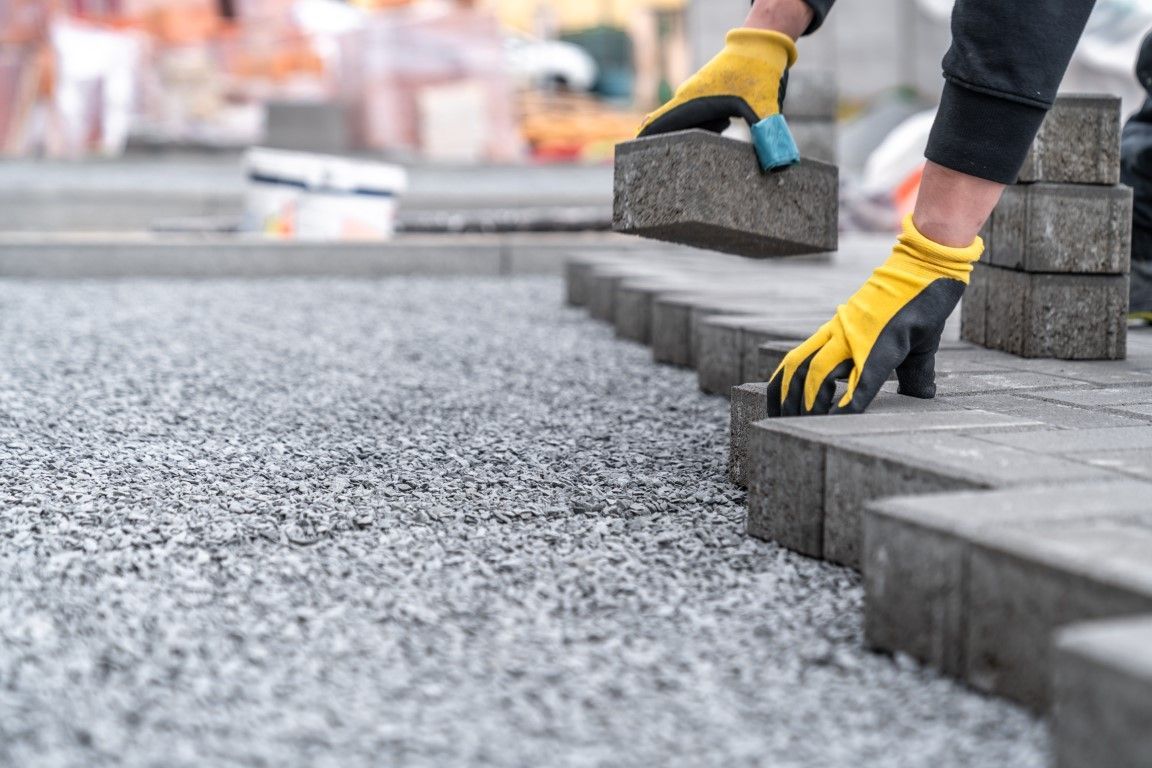
Concrete has evolved far beyond a simple gray slab. Today, it’s one of the most versatile, stylish, and durable building materials available, making it a top choice for property owners in Davis, CA. From sleek modern patios to long-lasting driveways and foundations, concrete offers a perfect balance of aesthetic appeal and structural strength. Whether you’re upgrading a residential home or improving a commercial property, here’s how concrete adds both style and durability to properties throughout Davis. Concrete Enhances Curb Appeal with Modern Design Options One of the biggest misconceptions about concrete is that it lacks visual appeal. In reality, modern concrete can be customized to match nearly any design style. Popular Decorative Concrete Options in Davis: Stamped Concrete: Replicates stone, brick, slate, or wood Stained Concrete: Adds rich, custom color tones Exposed Aggregate: Provides texture and visual interest Smooth & Polished Finishes: Ideal for modern and minimalist designs Why It Works in Davis: Decorative concrete complements Davis’s mix of modern homes, classic neighborhoods, and eco-conscious design trends while offering a clean, upscale look. Built for Long-Term Durability in Davis’s Climate Davis experiences hot summers, cooler winters, and seasonal rain, conditions that demand durable outdoor surfaces. Concrete is engineered to withstand these fluctuations without warping, rutting, or deteriorating quickly. Durability Benefits of Concrete: Resistant to cracking when properly installed Handles heavy vehicles and foot traffic Withstands temperature changes Long lifespan, often 30+ years Low risk of erosion or sinking Pro Tip: Professional installation and proper sealing dramatically extend the life of concrete surfaces. Concrete Driveways: Strength Meets Style Concrete driveways are one of the most popular upgrades for Davis homeowners due to their strength and visual versatility. Why Choose a Concrete Driveway? Supports heavy vehicles without deformation Requires minimal maintenance Offers customizable textures and colors Improves curb appeal and property value Concrete driveways outperform asphalt in longevity and appearance, making them a smart long-term investment. Concrete Patios Create Stylish Outdoor Living Spaces Outdoor living is a big part of life in Davis, and concrete patios provide the perfect foundation for entertaining, relaxing, and dining outdoors. Patio Design Possibilities: Multi-level patios Integrated fire pits Built-in seating or planters Outdoor kitchens and BBQ areas Concrete patios allow homeowners to blend design flexibility with weather resistance, creating beautiful outdoor spaces that last. Walkways & Hardscaping That Elevate Property Design Concrete walkways, steps, and hardscape features improve both safety and visual flow across a property. Benefits of Concrete Walkways: Smooth, stable surfaces Slip-resistant finishes available ADA-compliant design options Custom shapes and borders In both residential and commercial settings, concrete walkways enhance accessibility while adding a polished, professional appearance. Sustainable and Eco-Friendly Concrete Solutions Concrete aligns well with Davis’s sustainability-focused community. Many modern concrete solutions incorporate environmentally friendly practices. Eco-Friendly Concrete Advantages: Reflects heat better than asphalt Long lifespan reduces replacement waste Can include recycled materials Permeable concrete options improve drainage These features make concrete an environmentally responsible choice for long-term development. Low Maintenance, High Performance Concrete surfaces are easy to maintain compared to other materials. Simple Maintenance Includes: Occasional cleaning Periodic sealing every few years Minor crack repairs if needed This low-maintenance nature saves property owners time and money over the life of the installation. Ideal for Both Residential and Commercial Properties Concrete’s strength and adaptability make it suitable for: Homes and multi-family properties Retail centers and offices Schools and campuses Parking areas and walkways Its professional appearance and durability make it a smart choice for high-traffic areas throughout Davis. Concrete offers the perfect combination of style, strength, and longevity for properties in Davis, CA. With endless design options, unmatched durability, and low maintenance requirements, concrete continues to be one of the best investments for homeowners and business owners alike.
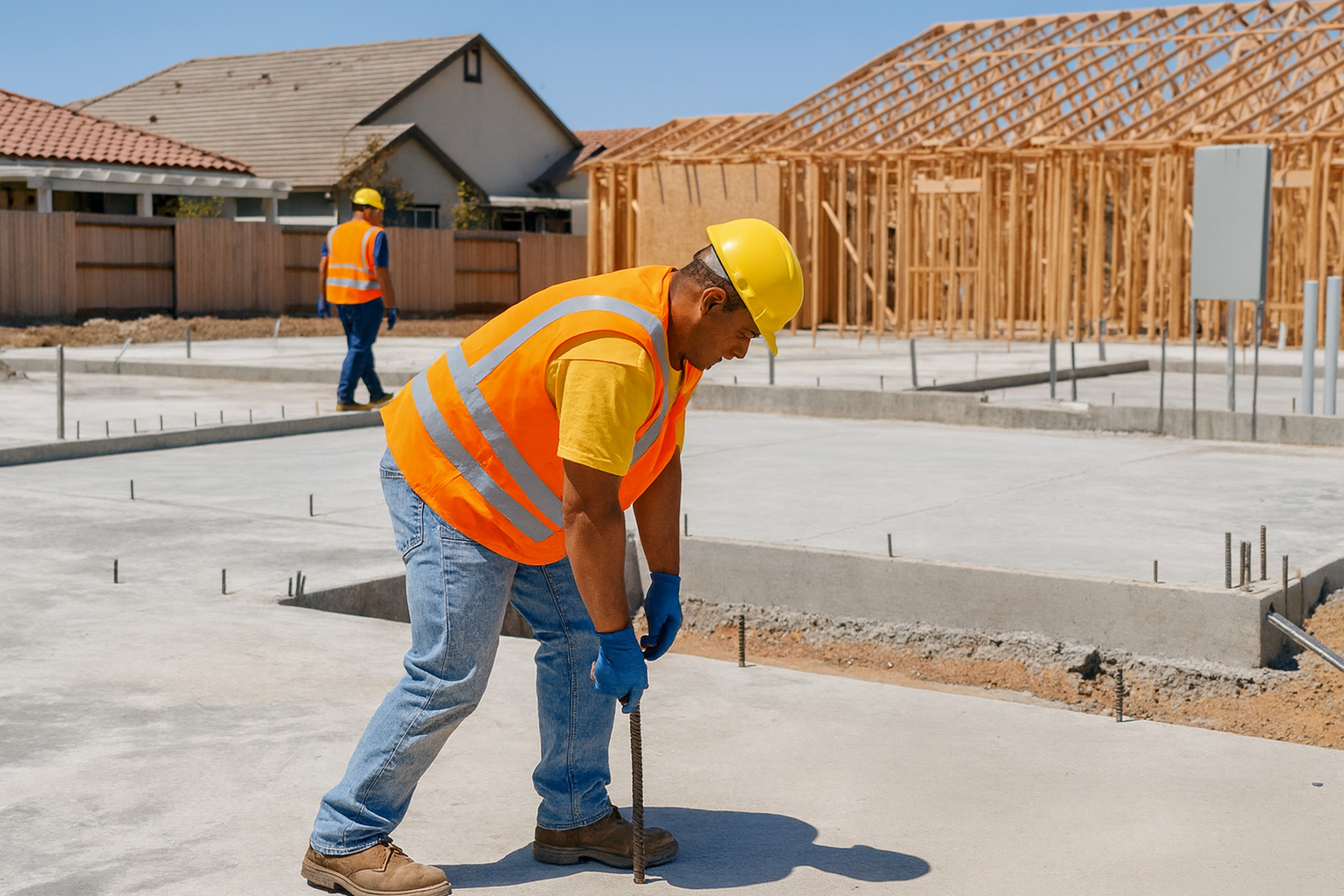
Every home needs a solid base, and in Davis, CA, where weather, soil composition, and long-term stability all come into play, a concrete foundation is one of the most important elements of residential construction. A strong foundation doesn’t just hold your home upright; it safeguards your investment, prevents costly structural issues, and ensures long-term comfort and safety. Here’s why concrete foundations are essential for Davis homes and what makes them the preferred choice for builders and homeowners alike. 1. Strength and Stability That Last for Decades Concrete foundations provide unmatched structural integrity. Unlike other materials that can warp, rot, or shift over time, concrete remains stable, even under pressure. Why This Matters in Davis: The Central Valley’s soil expands and contracts with changes in moisture. Concrete’s compressive strength helps your home resist this movement. Davis occasionally experiences mild seismic activity — reinforced concrete can absorb these vibrations better than alternative materials. With proper installation and curing, a concrete foundation can last 50–100 years or more with minimal maintenance. Pro Tip: Hire an experienced concrete contractor in Davis who understands local soil conditions and uses high-quality reinforcement methods to prevent cracking or shifting. 💧 2. Excellent Moisture and Pest Resistance One of the biggest threats to home foundations in California is moisture intrusion. Concrete foundations offer natural resistance to water, helping to prevent damage caused by leaks, mold, or soil erosion. Benefits Include: Moisture Protection: Properly sealed concrete prevents rainwater or groundwater from seeping into basements or crawl spaces. Pest Prevention: Termites, ants, and other wood-boring pests can’t penetrate concrete, unlike wood-based foundations. Durability in All Seasons: Concrete withstands the hot, dry summers and occasional winter rains common in Davis. Pro Tip: Add a vapor barrier and proper drainage system beneath your foundation to further protect against long-term moisture problems. 🌍 3. Energy Efficiency and Environmental Value A concrete foundation doesn’t just support your home — it helps make it more energy efficient. Concrete’s thermal mass allows it to absorb and store heat, maintaining stable indoor temperatures throughout the year. How It Helps Homeowners in Davis: Keeps interiors cooler during Davis’s hot summer months. Retains warmth during cooler winter nights. Reduces HVAC use, leading to lower energy bills. Pro Tip: If you’re building a new home, ask about insulated concrete forms (ICFs) — these combine strength and energy efficiency for superior long-term performance. 🛠️ 4. Customizable for Any Home Design Concrete foundations offer flexibility in design and application, making them ideal for everything from small residential builds to larger custom homes. Common Foundation Types in Davis: Slab-on-Grade Foundations: Cost-effective and great for level lots. Crawl Space Foundations: Provide easy access to plumbing and wiring. Basement Foundations: Add usable space and increase home value. Pro Tip: Your contractor can recommend the best foundation type based on soil conditions, drainage needs, and home design goals. 💰 5. Long-Term Value and Low Maintenance Concrete foundations require minimal upkeep compared to other materials — saving Davis homeowners money over time. They resist weathering, erosion, and pests, ensuring your home stays safe and structurally sound for decades. Why It’s a Smart Investment: Minimal maintenance beyond occasional inspections and sealing. Fewer repairs and replacements than wood or block foundations. Increases your home’s resale value and buyer confidence. Pro Tip: Schedule a foundation inspection every few years to identify early signs of settling or cracking. Timely maintenance prevents costly repairs down the road. 🌳 6. Peace of Mind for Homeowners At the end of the day, a concrete foundation means peace of mind. Knowing your home rests on a durable, professionally installed base gives you confidence that your property can handle whatever nature brings — from heavy rain to shifting soil. In Davis’s climate, where sustainability and longevity matter, a concrete foundation is the best way to ensure your home remains solid, safe, and energy-efficient for generations. Conclusion A strong home starts with a strong foundation — and for Davis homeowners, nothing compares to the reliability and performance of concrete. From superior durability and moisture resistance to long-term cost savings, concrete foundations deliver the strength and stability your home deserves.
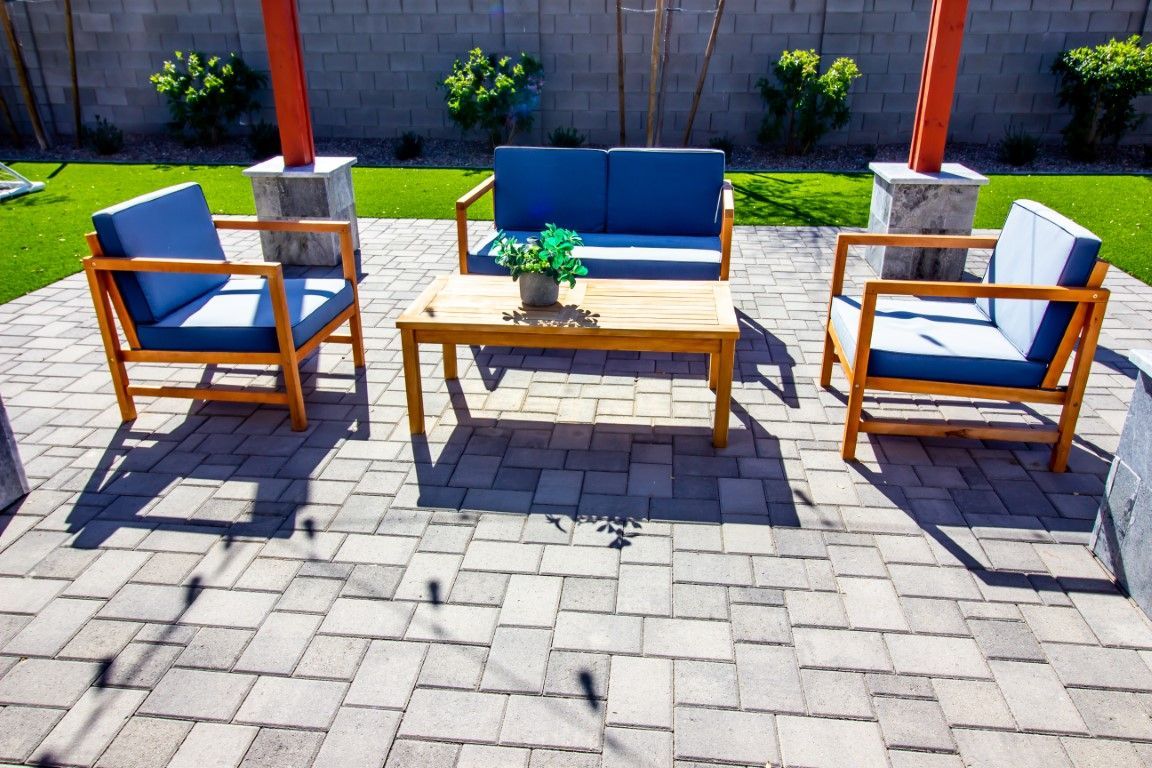
Your backyard should be more than just an open space, it should be an inviting extension of your home. For homeowners in Davis, CA, where outdoor living is a way of life, a well-designed concrete patio can turn an ordinary yard into a relaxing retreat or an entertainment hub. Whether you want a modern lounge area, a cozy fire pit corner, or a durable surface for outdoor dining, concrete is one of the most versatile materials you can use. It’s affordable, customizable, and built to withstand Davis’s hot summers and occasional rainy days. Here are some concrete patio design ideas to inspire your next backyard upgrade. 1. Stamped Concrete for a Natural Stone Look If you love the look of natural stone or brick but want something more affordable and low-maintenance, stamped concrete is the perfect solution. Why Davis Homeowners Love It: Mimics the look of flagstone, slate, or pavers at a fraction of the cost. Durable enough to handle heavy patio furniture and foot traffic. Customizable patterns and colors to match your home’s exterior. Pro Tip: Choose neutral or earthy tones to blend naturally with your landscaping and the surrounding environment. 2. Add a Fire Pit for a Cozy Gathering Space There’s nothing better than relaxing around a warm fire on a cool Davis evening. A concrete fire pit makes a stylish and functional focal point for your backyard patio. Design Options: Round or square in-ground pits for a minimalist look. Raised fire features with decorative stone or tile overlays. Built-in seating with matching stamped or stained concrete. Pro Tip: Consider incorporating a stained concrete border around the fire pit area to define the space and enhance safety. 3. Create an Outdoor Dining Area Take advantage of Davis’s sunny climate by creating a concrete patio dining space perfect for family meals or weekend entertaining. Benefits of Concrete Dining Areas: Provides a flat, stable surface for furniture and grills. Resistant to spills, grease, and outdoor wear. Easy to clean and maintain year-round. Pro Tip: Add a pergola or overhead string lights to enhance ambiance and make your patio usable day and night. 4. Incorporate a Decorative Stained Concrete Design Stained concrete patios add color, depth, and personality to your backyard. You can choose between acid-based stains for a rich, marbled effect or water-based stains for a more uniform, modern appearance. Why It Works in Davis: Resistant to fading under the California sun. Works well for both traditional and contemporary designs. Customizable in countless color combinations. Pro Tip: Complement your stained patio with landscape borders or planters in matching tones for a cohesive design. 5. Build Levels or Sections for a Dynamic Layout If your backyard has an uneven surface or slope, turn it into an opportunity to create a multi-level concrete patio. Different elevations can help define areas for dining, lounging, or gardening. Benefits: Adds architectural interest to your outdoor space. Prevents erosion and improves drainage in sloped yards. Enhances functionality by creating designated activity zones. Pro Tip: Include steps or retaining walls with decorative concrete finishes for a seamless transition between levels. 6. Integrate Planters and Greenery Built-in concrete planters add natural beauty and help soften the look of your patio. They’re perfect for showcasing California-native plants that thrive in Davis’s Mediterranean-style climate. Advantages of Built-In Planters: Adds greenery without cluttering the space. Provides natural shade and color contrast. Durable, low-maintenance, and water-efficient. Pro Tip: Use succulents, lavender, or ornamental grasses for a drought-tolerant landscape that looks stunning year-round. 7. Add Lighting for Evening Ambiance Your concrete patio should be as inviting at night as it is during the day. Integrated lighting can highlight your patio’s design while improving safety and visibility. Lighting Ideas: Recessed lights along concrete steps or borders. Solar-powered garden lights for eco-friendly illumination. Overhead string lights or sconces for a warm glow. Pro Tip: Combine lighting with textured or stained concrete surfaces to make colors and patterns stand out beautifully after dark. 8. Mix Materials for a Modern Touch Blend concrete with wood, stone, or metal accents for a contemporary outdoor aesthetic. The contrast in textures creates visual interest and elevates your patio’s overall design. Popular Combinations: Concrete slabs with wood decking inlays. Metal or stone edging around stained concrete areas. Concrete pavers separated by gravel or grass joints. Pro Tip: This hybrid style works particularly well in modern Davis homes where minimalist design and clean lines are preferred. Whether you prefer a sleek, modern design or a cozy, rustic retreat, a concrete patio offers endless ways to upgrade your Davis backyard. From stamped and stained designs to fire pits, lighting, and planters, concrete delivers both beauty and durability, perfectly suited for California living.
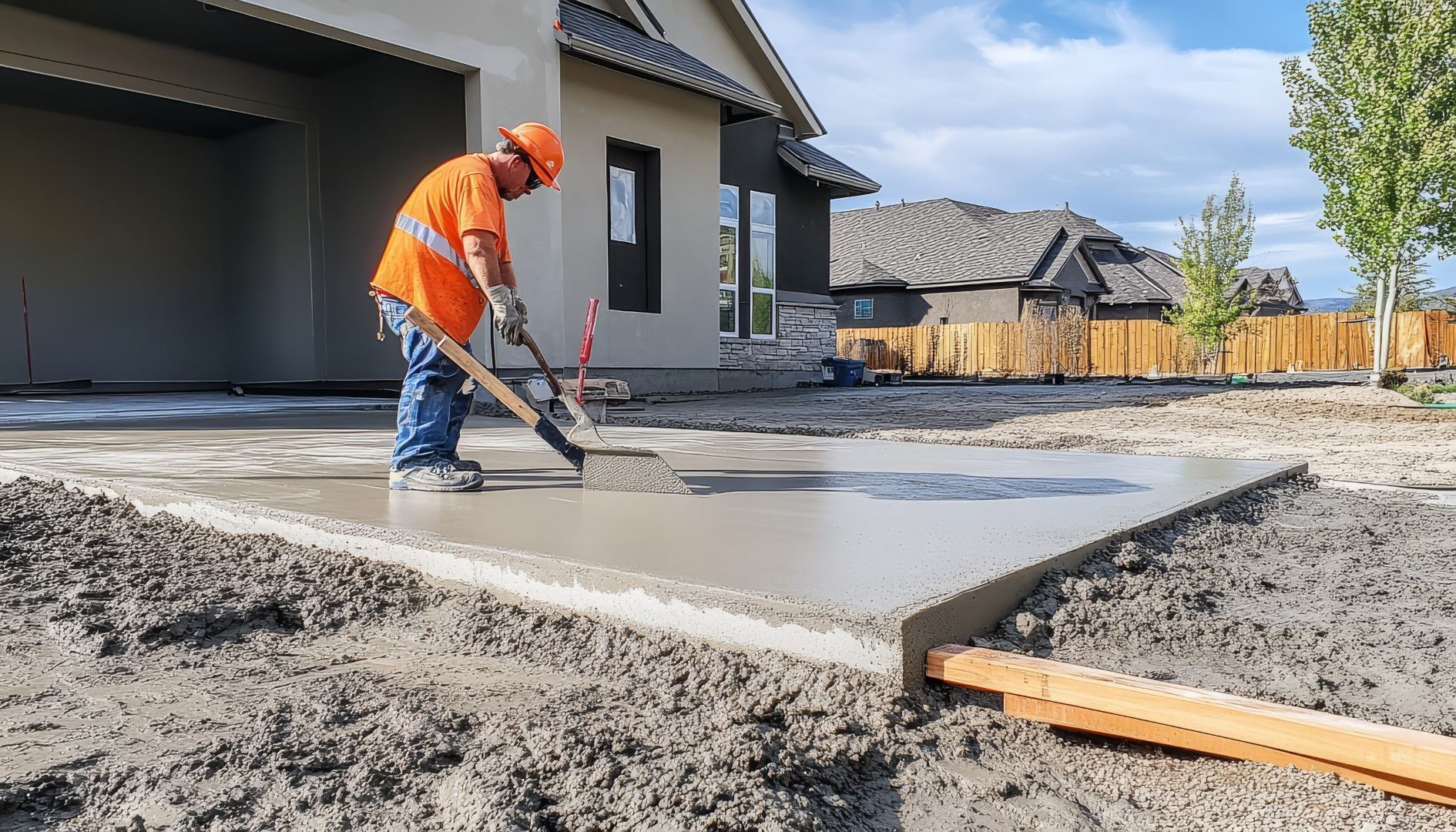
When it comes to upgrading your property, one of the most valuable improvements you can make is installing a concrete driveway. It’s durable, long-lasting, and visually appealing, making it a smart investment for both residential and commercial properties. Whether you’re building a new home or replacing an old driveway, choosing concrete over asphalt, gravel, or pavers offers unmatched strength and versatility. Here’s a closer look at the top benefits of installing a concrete driveway and why it’s a top choice for homeowners who value durability and design. 1. Long-Lasting Durability One of the biggest advantages of concrete driveways is their exceptional lifespan. When properly installed and maintained, concrete can last 30 years or more, even in varying weather conditions. Why It Matters: Concrete withstands heavy vehicles and constant use. It resists erosion, cracking, and damage from the elements. Unlike asphalt, it doesn’t soften under heat or deteriorate from oil spills. Pro Tip: Sealing your driveway every few years can further extend its life and keep it looking fresh. 2. Cost-Effective Investment While the initial cost of concrete may be slightly higher than asphalt or gravel, it pays off long-term. Concrete driveways require minimal maintenance and far fewer repairs, saving you money over time. Benefits Include: Reduced repair and resurfacing costs. Longer replacement intervals. Increased property value and curb appeal. Homebuyers often see a well-installed concrete driveway as a premium feature, a bonus if you ever plan to sell your property. 3. Weather and Climate Resistance Concrete performs exceptionally well in various climates, including areas with heat, rain, and mild winters. Its dense composition and reflective surface help prevent heat absorption and surface damage. Why Homeowners Love It: Resists cracking from heat expansion and cold contraction. Reflects sunlight, keeping the surface cooler in summer. Drains water efficiently, preventing pooling or erosion. Whether you’re in the warm valleys of California or cooler northern regions, a concrete driveway stands up to seasonal challenges. 4. Aesthetic Versatility Concrete doesn’t have to be plain gray! Modern options like stamped concrete, exposed aggregate, and stained finishes allow homeowners to customize their driveways with unique textures, patterns, and colors. Design Options Include: Stamped concrete that mimics stone, brick, or slate. Colored finishes to complement your home’s exterior. Decorative borders or patterns for added curb appeal. A decorative concrete driveway can transform your property’s exterior from ordinary to impressive — while still offering unmatched strength. 5. Low Maintenance Requirements Unlike asphalt or gravel, which need frequent patching and resealing, concrete is incredibly low maintenance. Easy Maintenance Tips: Sweep regularly to remove dirt and debris. Power wash occasionally to remove stains. Apply a protective sealer every few years for added longevity. Concrete’s smooth surface also makes snow and debris removal quick and easy — an added bonus for homeowners in changing climates. 6. Eco-Friendly and Sustainable Concrete driveways are also an eco-friendly choice. They require fewer repairs and replacements over time, which means less waste. Their light color reflects sunlight, helping reduce urban heat buildup. Additionally, locally sourced materials and modern low-carbon concrete mixes make today’s installations more sustainable than ever before.
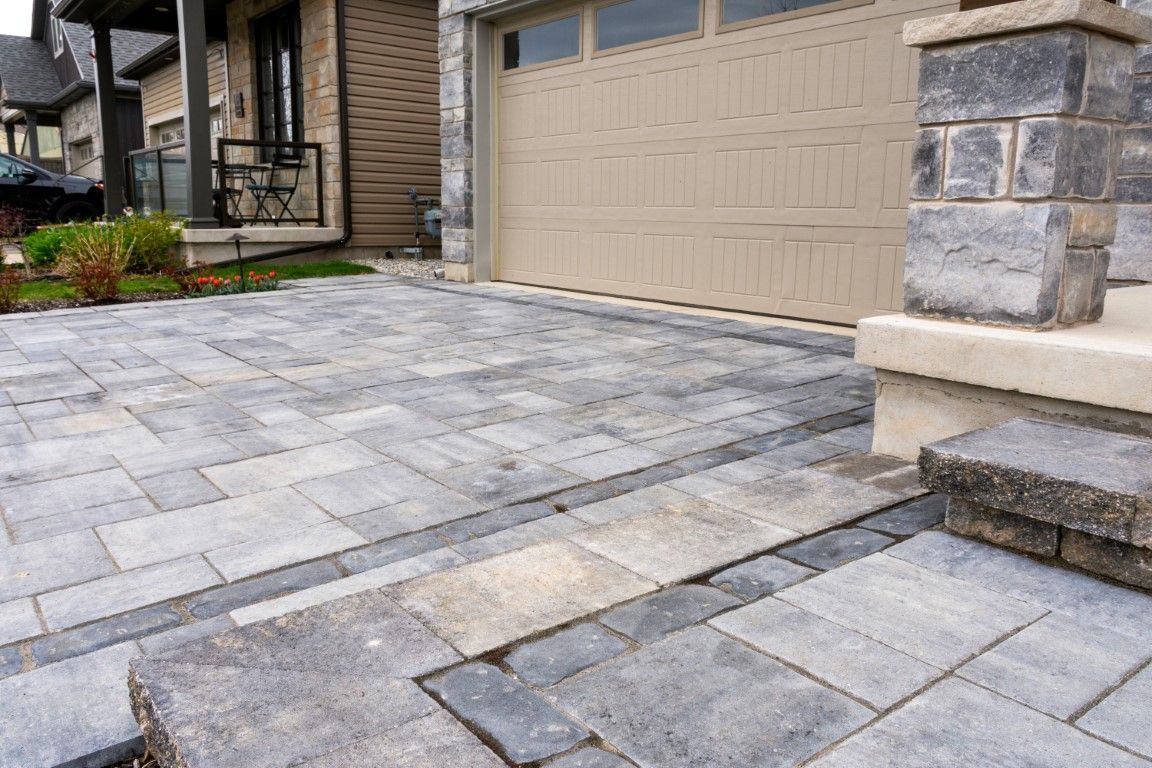
When it comes to enhancing your driveway, patio, or pool deck, decorative concrete offers both durability and design flexibility. Two of the most popular options are stamped concrete and stained concrete. While both can transform ordinary gray slabs into stunning surfaces, they differ in appearance, application, and maintenance. Let’s explore the pros and cons of each so you can decide which is the best fit for your home. What Is Stamped Concrete? Stamped concrete is created by pressing patterns or textures into freshly poured concrete before it sets. It can mimic the look of stone, brick, slate, or even wood, giving your surface the beauty of natural materials at a fraction of the cost. Benefits of Stamped Concrete: Versatile Designs: Choose from a variety of colors, patterns, and textures. Durable Surface: Resists cracking, fading, and heavy wear when properly sealed. Cost-Effective: More affordable than installing individual stones or pavers. Increased Curb Appeal: Adds a high-end finish to patios, walkways, and driveways. Considerations: Stamped concrete requires sealing every few years to maintain color and prevent moisture damage. It can also become slippery if not treated with a non-slip additive. What Is Stained Concrete? Stained concrete enhances existing concrete surfaces with rich, translucent colors. It doesn’t cover the surface like paint — instead, it penetrates the concrete for a natural, variegated look. Benefits of Stained Concrete: Beautiful, Custom Color: Available in earthy tones or vibrant hues. Cost-Effective Upgrade: Ideal for revitalizing older concrete without replacement. Low Maintenance: Requires minimal upkeep and periodic resealing. Indoor & Outdoor Use: Works great for floors, patios, and garages. ⚠️ Considerations: Since stains penetrate the concrete, imperfections or variations in the slab will show through — which can be either a design feature or a limitation, depending on your preference. Which Option Is Best for Your Home? The choice between stamped vs. stained concrete depends on your design goals and how you plan to use the space: Feature Stamped Concrete Stained Concrete Best For New patios, walkways, and driveways Existing concrete floors or patios Appearance Textured patterns that mimic stone or brick Smooth, colorful, natural finish Cost Moderate Lower Maintenance Needs resealing every few years Simple cleaning and sealing Durability Long-lasting with proper care Long-lasting if sealed and maintained If you’re building a new patio or driveway and want a bold, patterned look, stamped concrete is ideal. If you’re refreshing an existing surface or prefer a sleek, modern aesthetic, stained concrete is the better choice.
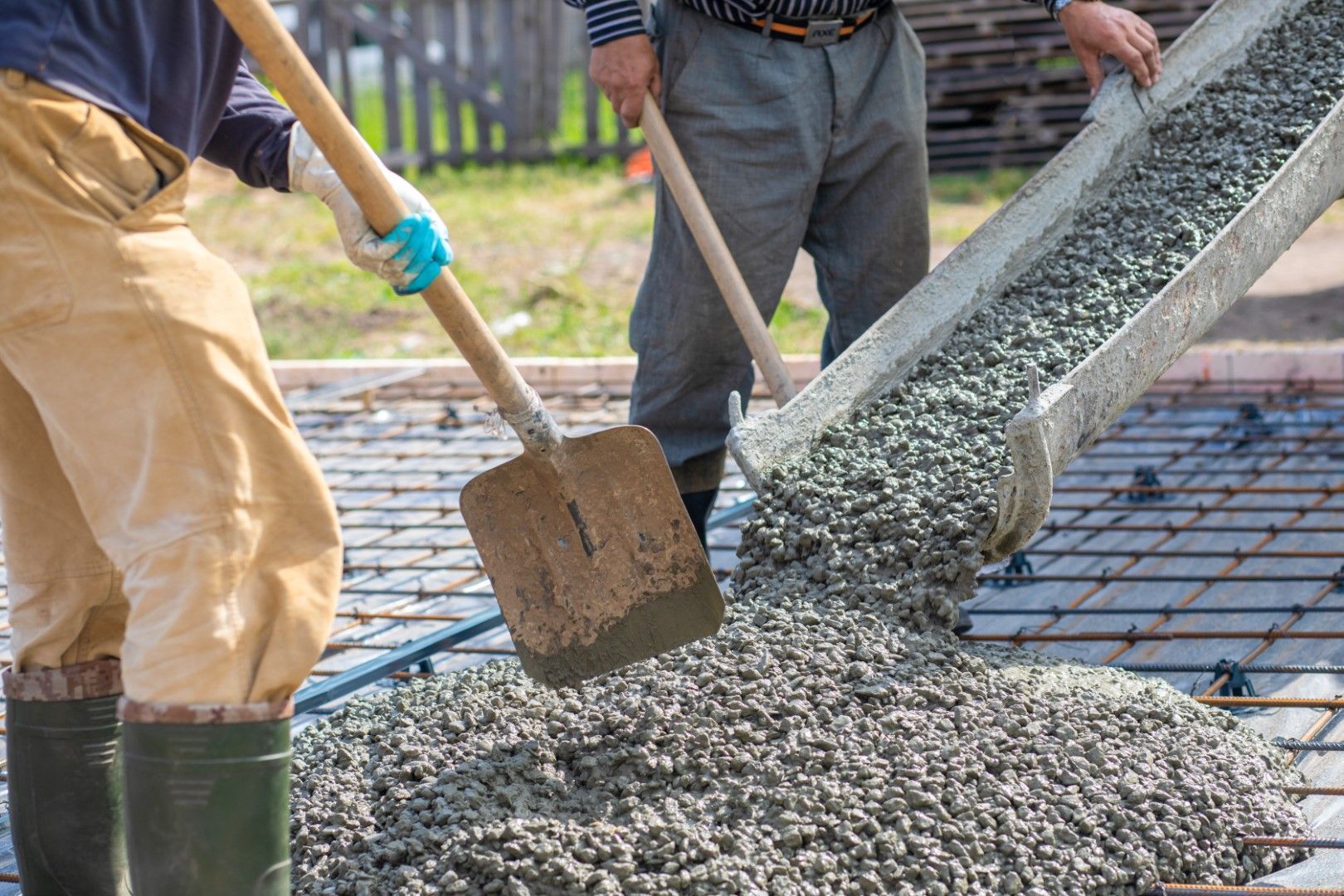
1. Large or Deep Cracks Hairline cracks can often be repaired, but if your driveway has large, deep, or spreading cracks, replacement may be the only long-term solution. In Davis, seasonal temperature shifts and soil movement can cause cracks to widen over time, making the surface unsafe and unattractive. 2. Potholes and Uneven Surfaces Potholes don’t just look bad — they can damage your car’s tires and suspension. If your driveway has areas where chunks of concrete are missing or the surface is noticeably uneven, it’s a clear sign the structure has weakened and needs replacement. 3. Drainage Problems Pooling water on your driveway is more than a nuisance — it accelerates deterioration. Standing water seeps into cracks, erodes the base, and leads to larger structural issues. If you notice persistent drainage problems, it may be time for a complete driveway overhaul. 4. Severe Discoloration and Stains Over the years, oil, rust, and weather exposure can leave your driveway permanently stained. While pressure washing or sealing may help, widespread discoloration combined with other damage often points to the need for replacement rather than temporary fixes. 5. Age of the Driveway Concrete driveways typically last 20 to 30 years with proper care. If your driveway is approaching or beyond this age range and showing multiple signs of wear, investing in a replacement is often more cost-effective than repeated repairs. Why Replace Instead of Repair? While small fixes can extend the life of your driveway, repairs can only go so far. Replacement offers: Increased property value with better curb appeal. Improved safety for vehicles and pedestrians. Long-term durability that saves money on repeated maintenance. Customization options like decorative finishes or stamped concrete.